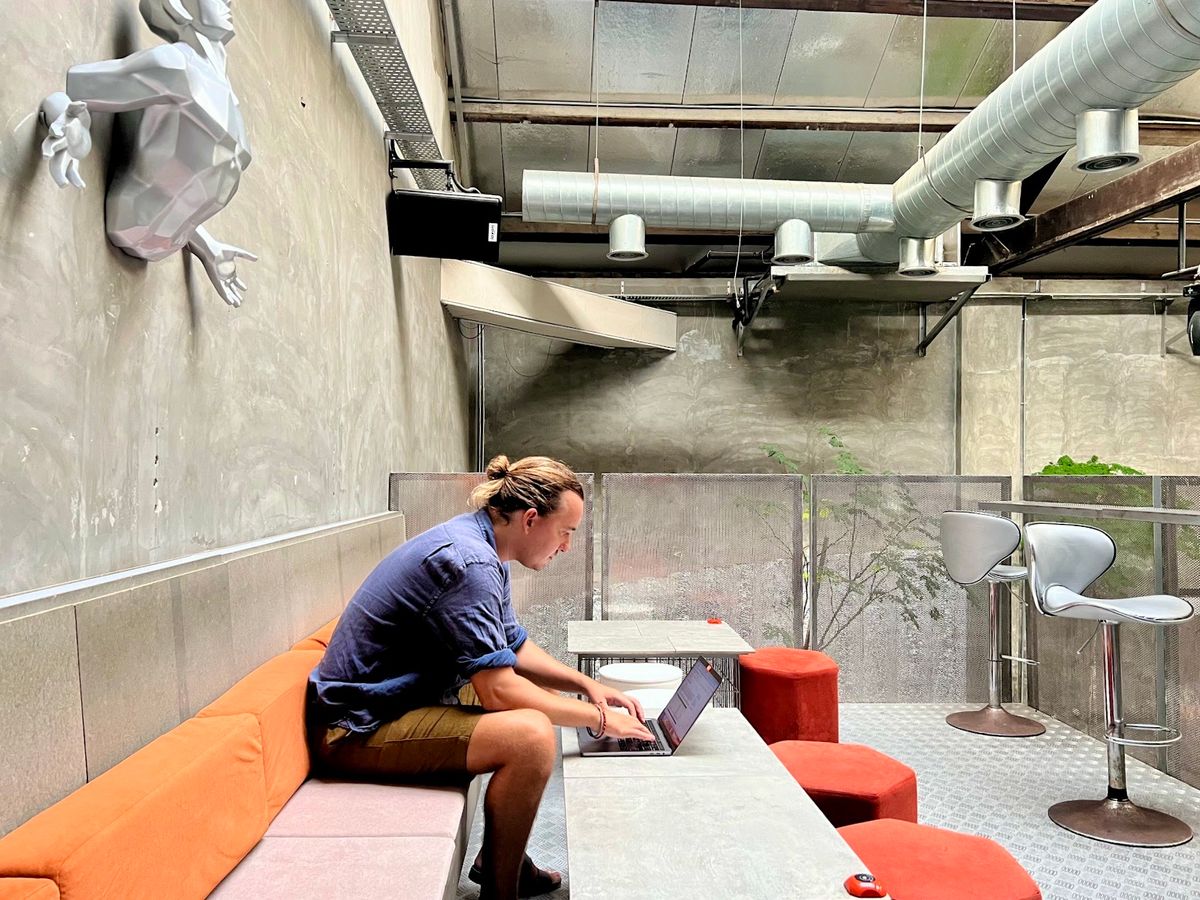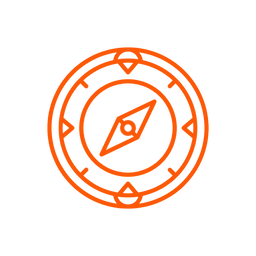👨🏽💻 How to Start Freelancing in 11 Steps

Have you ever dreamed of being your own boss, working from anywhere in the world, and setting your own schedule? This is what spurred me to start my freelance marketing business.
Freelancing offers the ultimate flexibility and freedom to design the life you want. However, it can be challenging to know where to start.
That's why I've written this article to provides practical advice and valuable insights on how to begin your journey as a freelancer.
You might find this relevant:

11 Steps to Establish Your Remote Freelance Business
- Pick a focus for your business
- Define your niche
- Align your services with the target customer’s needs
- Choose a future-proof name
- Define your mission statement & set goals
- Set your rates
- Pick a business structure
- Build your digital branding
- Build your business website
- Setup your business software
- Find new clients
🫀 #1 Pick a focus for your business
When determining the focus of your freelance business, it's good to draw on your past experience. What have you done before that can be packaged into a suite of services that help to solve a potential customer's problems?
Do you have an area of expertise that you've gained as an employee working for someone else which you feel confident to step out on your own and sell? Or is there a side hustle or hobby you're passionate about that has commercial potential?
You'll want to make sure you find something that you're passionate about and have a good working knowledge of. If you don't, then I would strongly consider a freelance marketing business, as many services you can offer don't require formal training and can be self-taught through various online resources.

🫱🏼🫲🏽 #2 Define a niche
It’s a good idea after determining the area you will focus your business to "niche down." What this means is to specialize in a particular area.
For example, if you were to select Marketing as the focus for your freelance business, decided to hone in on B2B clients using LinkedIn and offering marketing services on this platform would be "niching down."
It will enable you to stand out from the competition, attract higher-paying clients, and build a more sustainable business heading into the future. To help you make the best decision for your business, here are three essential factors to consider when picking a niche.
📈 The size of the market
When choosing a niche, it’s important to consider the size of the market. If you’re targeting a small niche with only a few potential clients, it won’t be easy to generate enough revenue to sustain your business.
On the other hand, if you choose a niche with too many competitors, it won’t be easy to differentiate your business and attract customers. The ideal niche is large enough to provide ample opportunity for growth but not so large that it’s overcrowded.
🤝 The needs of the market
Another essential factor to consider when choosing a niche is the market’s needs. What problem are your potential clients trying to solve? By understanding the needs of your target market, you can develop solutions that meet their specific requirements.
This will make it easier to sell your services and stand out from the competition.
🎓 Your skills and experience
When picking a niche, it’s essential to consider your skills and experience. Choose a niche you’re passionate about and have the skills to serve effectively.
This will make it more enjoyable to work in and enable you to provide better quality service and build a strong reputation in your chosen field.
🔥 #3 Align your services with the target customer’s needs
After conducting your niche research and selecting which to target, the next step is to align your skills to the needs of the customer you’re looking to work for.
If you feel you don’t fully grasp which needs are most important to your customer group at this step, make sure to do some further research.
One way is to conduct competitive research into companies that are trying to reach a similar group you wish to satisfy or to define an ideal customer profile and work back from there.
⚡️ #4 Choose a future-proof name
Selecting a name for your business shouldn’t be taken lightly, as it will make your life easier down the road to avoid a rebrand. It’s crucial to pick a name that is easy to remember and pronounce. You also want to make sure that the name you choose is future-proof. For example, some solo entrepreneurs, when starting, will name their business after themselves.
However, I wouldn't suggest this as it potentially makes things difficult down the road if your business grows and you bring on employees or contractors to work on your behalf.
Furthermore, you want to make your name relevant to your niche so that it helps to cut through the noise of your competition whilst also giving yourself room to grow into other areas over time.

🎯 #5 Define a mission statement & set Goals
The Company mission is a statement of what it does and why it exists. It should be clear, concise, and easy to remember. The Company mission should guide all Company decision-making. Company goals provide direction and signposts where you can reflect and determine if your business is moving in the right direction.
I'd suggest establishing a high-level 5-year goal of where you see your remote freelance business and defining an annual goal for the next 12 months that's aligned with your longer-term vision.
To help you build your annual goal, I like to approach it by breaking the year into 4 quarterly goals and defining each quarter 2-3 main things I want to achieve.

💰 #6 Set your rates
Setting your rates can be tricky when starting, as you lack real-world reference points. Therefore, you must build a baseline of rates based on your competitor’s research.
You could consider dropping your rates by 10-20% below the market rates so you’re more price competitive. However, be careful not to undervalue your services too much, as this can hurt the perception your potential customers might have of your perceived quality.
Another critical dimension to consider when setting your rates is calculating the margins of the business. A simple budgeting sheet can help give you a birds-eye view of your financial situation depending on projected income with different rates you set.

🏗️ #7 Pick a business structure
When starting your freelance business, choosing the proper business structure is essential. There are three primary types of business structures we'll look at below.
When choosing a business structure, it is vital to consider the size and complexity of the business and the level of personal liability you are willing to accept.
🕺🏻 Sole Trader
Sole traders are the simplest and most common type of business structure. Sole traders have complete control over their business but are also personally liable for all debts and losses. You will be considered a “Freelancer” if you select this business structure.
👯♂️ Partnership
Partnerships are similar to sole traders, but there are two or more owners. Partnerships provide more capital and expertise, but each partner is personally liable for the business’s debts.
🪖 Limited Liability
Limited liability companies offer the most protection for owners, as they are not personally liable for the business’s debts. However, limited liability companies can be more complex to set up and operate than sole traders or partnerships.
However, if you are an EU citizen, consider setting up a Limited Liability company Estonian via their E-residency program. This is a reasonably painless process when using a provider such as XOLO to help you do so.
When choosing a business structure, it is vital to consider the size and complexity of the business and the level of personal liability you are willing to accept. We suggest seeking professional advice from an accountant or financial advisor before deciding.
🎨 #8 Build your digital branding
Your digital branding is what will make your business stand out from the rest. It’s important to consider all aspects of your branding, from your logo to font pairings and colour palette.
You’ll also want to choose images that reflect your brand and will appeal to your target audience. Don't worry if you're not very creative; there are many tools now available to help you, which we'll cover a little later on in this article.
👨🏽💻 #9 Build your business website
Your website is one of the most critical assets when starting your business. It will communicate “who”, “what”, and “why” you’re in business and “how” you can satisfy your target customers’ needs by showcasing your portfolio of previous work or examples of what you can do.
Additionally, it may also be the first impression a potential customer has of your business, so it’s important to invest time and money into making it look professional as well as easy to navigate.
🛠️ #10 Set up your Business Software
If you want to set up a website design business, you will need some key pieces of software to run your operation smoothly and efficiently.
🎨 Design & Branding
Personally, I use Canva for all things company branding, along with Adobe Express. In addition, Figma is great for more detailed design work for creating marketing collateral for your business as well as potential clients.
💻 Website
There are several ways you can build a website: from scratch, using CMS platforms such as WordPress or Ghost, or using an online website builder such as Wix. All these options have their pros and cons, so it’s important to find the best solution for your business needs.
🗓️ Project Management Software
You will need project management software to keep track of all the different aspects of each website design project you take on. This software will help you to stay organized and on schedule, ensuring that each project is completed on time and within budget.
📑 Contract/Proposal Software
You will also need contract/proposal software to create detailed proposals for potential clients. This software will help you clearly outline your services and pricing, making it easy for potential clients to understand your offer.
⚖️ Accounting Software
You will need accounting software to manage your finances and keep track of incoming and outgoing payments.
⏱ Time Tracking Tools
Time tracking tools will also be essential to bill clients accurately for the time you spend working on their projects.
🔎 #11 How to find new clients
Every business needs clients to survive. As an entrepreneur, you must look continually for new clients to keep your business afloat. But where do you find them?
Luckily there are a number of avenues to find clients no matter what the focus of your freelance business is. Let’s take a closer look at each one.
🧐 SEO
One way to attract new clients is to optimise your website for search engines. When potential clients search for the types of services you offer in your area, you want your name to come up. Ensure your website is easy to find and navigate and contains keywords related to web design.
📢 Personal Network
Another avenue for finding new clients is through your network. Tell your friends, family, and acquaintances that you’re looking for customers, and you can offer x,y, and z services. Word of mouth is one of the most powerful forms of marketing!
⚡️Publish New Work on Your Website & on Social
Showing off your latest work can also help attract new clients. Make sure they share them on social media and other platforms you present alongside your website. This will help to showcase your skills and attract the attention of potential clients.
🔎 Scour Job Boards
Job boards can be a great place to find work. Check out websites like Indeed & Linkedin for leads on new projects.
📞 Cold Outreach
Don’t hesitate to reach out to potential clients directly. If you see a company that you think could benefit from your services, send them an email or message on LinkedIn. You never know—they may be interested in hiring you for the job.
You might find this article interesting:

Final thoughts
With these eleven steps, you now have a guide on how to start a freelance business and start your adventure as a digital nomad working whilst travelling.
We shared the importance of selecting a niche and company name, setting company goals, and developing a strong website to showcase your skills. We also highlighted business software that will help with running your business and some avenues to find new clients.
Now the only thing that’s left is for you to get started! Reach out to us on Instagram if you have any questions - @remotevagabond
